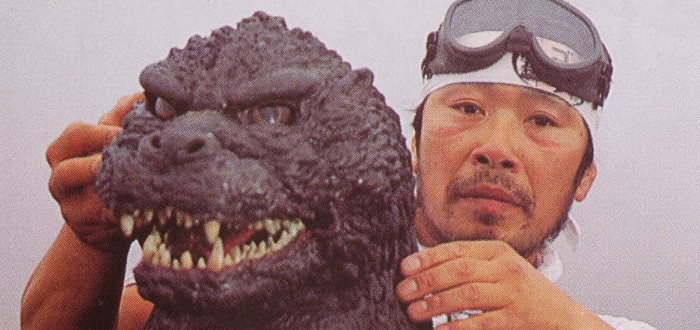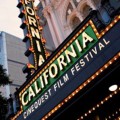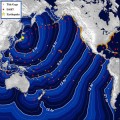Though he usually lays waste to seaside cities, one of the most famous movie monsters will head inland just this once, stomping into San Jose to celebrate his 60th anniversary and the release of a brand-new Hollywood reboot. Godzilla will be among the cinematic creatures, superheroes and comic characters feted at the Big Wow! Comic Fest taking place this weekend at the San Jose Convention Center.
An array of panel discussions and meet-and-greets featuring guest celebrities are slated to take place throughout the event, including an appearance from Kenpachiro Satsuma, who portrayed Godzilla starting with 1984’s Return of Godzilla and donned the rubber suit for eight films in all. Satoshi “Bin” Furuya, who played the original Ultraman, will also be in attendance, and both will be on hand for two special after-hours screenings of the new Legendary Pictures release of Godzilla.
August Ragone, author of Eiji Tsuburaya: Master of Monsters, a profile of the filmmaker and special effects wizard who brought Godzilla and host of other beloved kaiju creatures to life, will introduce the duo and lead discussions at several panels and the film screenings.
“Godzilla has become this iconic character that has transcended generations, international boundaries, cultural boundaries and almost stands apart from any of the films that he’s been featured in. He’s been the butt of jokes, he’s been celebrated, but he’s become part of American pop culture,” says Ragone.
Although the popular image of Godzilla in mainstream media for many years could be seen as that of a somewhat lovable, goofy creature that fought an array of rubber foes in films made mainly for children, the character got its start as a very serious, dark symbol of the nuclear age.
“The original film was important for its time—as many scholars and authors have written before, Japan was the only nation to have suffered an atomic attack, but I don’t think the Japanese were trying to work out an anxiety about Hiroshima and Nagasaki, which is what everyone says—what really launched that film was a more recent incident that happened around the time that the film was produced, the Lucky Dragon story—that was the foremost thing in the public’s mind.”
That incident, in which a Japanese fishing boat was exposed to radioactive fallout from a 1954 U.S. nuclear test near the Marshall Islands, shocked and scared the citizens of Japan. The crew was sickened (one member died within a year), and in the days before the extent of the exposure was realized, the tuna they had caught had been shipped to markets; despite government efforts, it was thought that at least some of the fish had been sold and eaten.
“The panic that it caused in the country, and the tension between the United States and Japan, the reparations the Americans tried to pay, this was the first and foremost thing in their minds, so when the film came out in November of 1954, that’s what everybody was thinking about, the references that they saw on the screen were topical, so that really brought home the real world setting of that film.”
Since then, Godzilla has appeared in nearly 30 films and countless television shows, comics, commercials, toy lines, and virtually every other imaginable form of mass media. The fact that this weekend’s festivities coincide with the opening weekend of the new film should make Bay Area Godzilla fans extremely happy—even those approaching the new major Hollywood studio picture with cautious optimism.
“I really love these films because they are Japanese, and my fear has always been when you remove the Japanese-ness, it no longer resembles what it is supposed to be—if you move too far away from the premise, it loses its meaning. But as far as the new film is concerned, I think they get it, Gareth Edwards gets the legacy,” says Ragone, whose Master of Monsters, just re-published by Chronicle Books, was cited as a valuable resource by Edwards.
With all of the attention focusing on the character this year with the 60th anniversary of the first film and the release of new movie, Ragone feels that the monster still rightly deserves its place in world culture.
“I think that Godzilla is still relevant; for many years even the Japanese thought that Godzilla had lost his relevance, because of the nuclear issue, the war issue—but now with what happened at Fukushima, I think that caused concern worldwide with nuclear energy, so Godzilla’s nuclear origin and that symbolism hasn’t lessened.”

 Craft Beer Pioneers Share History, Lessons Learned at Craft Beverage Expo
Craft Beer Pioneers Share History, Lessons Learned at Craft Beverage Expo  Ramen Gets Whimsical at Kansui in Willow Glen
Ramen Gets Whimsical at Kansui in Willow Glen 


